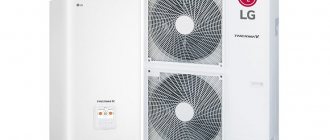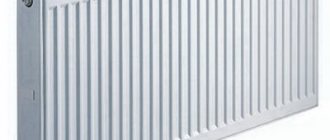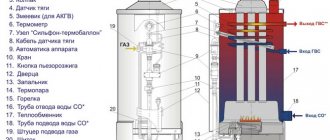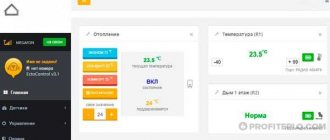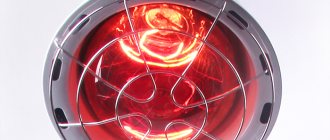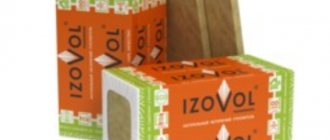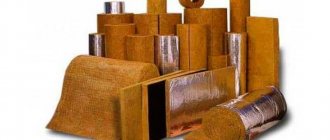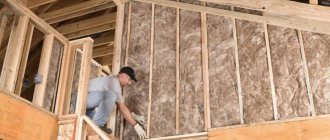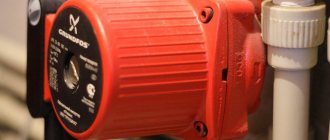A heat pump is a device that heats water from heating and hot water supply systems by compressing freon, initially heated from a low-grade heat source, by a compressor to 28 bar. Under high pressure, a gaseous coolant with an initial temperature of 5-10 ° C; releases a large amount of heat. This allows you to warm up the coolant of the consumption system to 50-60 °C, without the use of traditional types of fuel. Therefore, it is believed that a heat pump provides the user with the cheapest heat.
For more information about the advantages and disadvantages, watch the video:
Such equipment has been in operation for more than 40 years in Sweden, Denmark, Finland and other countries that support the development of alternative energy at the state level. Not so actively, but more confidently every year, heat pumps are entering the Russian market.
Purpose of the article: to review popular models of heat pumps. The information will be useful to those who seek to save as much as possible on heating and hot water supply of their own home.
The heat pump heats the house with free energy from nature
In theory, heat can be extracted from the air, soil, groundwater, wastewater (including from a septic tank and water pumping station), and open reservoirs. In practice, for most cases, the feasibility of using equipment that takes thermal energy from the air and soil has been proven.
Options with heat extraction from a septic tank or sewage pumping station (SPS) are the most tempting. By passing the coolant through the HP at 15-20 °C, the output temperature can be at least 70 °C. But this option is acceptable only for a hot water supply system. The heating circuit reduces the temperature in the "tempting" source. Which leads to a number of unpleasant consequences. For example, freezing of drains; and if the heat exchange circuit of the heat pump is located on the walls of the sump, then the septic tank itself.
The most popular HPs for the needs of CO and DHW are geothermal (using the heat of the earth) devices. They are distinguished by their best performance in warm and cold climates, in sandy and clayey soils with different groundwater levels. Because the soil temperature below the freezing depth remains almost unchanged throughout the year.
Summarizing
Participants on our portal use a heat pump as a full-fledged heating system (not an auxiliary one). According to our observations, a heat pump is becoming an increasingly popular method of heating a country house. According to reviews from our users, a heat pump works best in houses with low heat loss, so ideally the house should be “tailored” for this device at the design stage. A good option would be a frame structure with all the necessary insulation, membranes and films, or a stone house. Second point: a heat pump is most effective in combination with low-temperature heating devices, so it’s better to immediately focus on heated floors.
On FORUMHOUSE you can find a huge amount of information for those who decide to make a heat pump with their own hands or someone else’s. There are recommendations for the correct design of a geothermal circuit of a heat pump, invaluable tips for making a heat pump yourself, find out how to make the most budget-friendly, “people’s” heating system based on a heat pump, watch our video about a house that is successfully heated with a heat pump.
Operating principle of a heat pump
The coolant is heated from a source of low-potential (5...10 °C) heat. The pump compresses the refrigerant, the temperature of which rises (50...60 °C) and heats the coolant of the heating system or hot water supply.
During the operation of the HP, three thermal circuits are involved:
- external (system with coolant and circulation pump);
- intermediate (heat exchanger, compressor, condenser, evaporator, throttle valve);
- consumer circuit (circulation pump, heated floor, radiators; for hot water supply - tank, water points).
The process itself looks like this:
Thermal energy removal circuit
- The soil heats the saline solution.
- The circulation pump lifts the brine into the heat exchanger.
- The solution is cooled by a refrigerant (freon) and returned to the ground.
Heat exchanger
- Liquid freon, evaporating, takes away thermal energy from the brine.
- The compressor compresses the refrigerant, causing its temperature to rise sharply.
- In the condenser, freon transfers energy through the evaporator to the coolant of the heating circuit and becomes liquid again.
- The cooled refrigerant goes through the throttle valve to the first heat exchanger.
Heating circuit
- The heated coolant of the heating system is drawn by the circulation pump to the dissipating elements.
- Transfers thermal energy to the air mass of the room.
- The cooled coolant returns through the return pipe to the intermediate heat exchanger.
Video with a detailed description of the process:
Use of thermal installations in the world
The practice of using such thermal units in the world goes back more than 50 years. The main driving reasons for this phenomenon were the rise in price of traditional energy resources and the widespread support by the governments of many countries for the use of alternative energy sources.
Therefore, the number of heat pumps is constantly growing at a high rate - up to 10 - 30% per year, despite the high cost of installation. The number of such devices currently amounts to more than 270 pieces. Thermal systems are most actively used in the USA and Canada. They account for up to half of the installations used worldwide.
Russia, despite positive conditions for the use of heat pumps, lags behind global trends in their use. Our belief in a complete supply of natural resources seems to play a role here. At the same time, not all settlements in the country have gas pipelines. World experience in the use of heat pumps indicates positive trends in the development of their use.
What is cheaper for heating: electricity, gas or heat pump?
We present the costs of connecting each type of heating. To present the general picture, let’s take the Moscow region. Prices may differ in regions, but the price ratio will remain the same. In the calculations we assume that the site is “bare” - without gas or electricity.
Connection costs
Heat pump. Laying a horizontal contour at MO prices - 10,000 rubles per shift of an excavator with a bucket bucket (removes up to 1,000 m³ of soil in 8 hours). A system for a house of 100 m² will be buried in 2 days (true for loam, on which you can remove up to 30 W of thermal energy from 1 square meter of circuit). About 5,000 rubles will be required to prepare the circuit for operation. As a result, the horizontal option for placing the primary circuit will cost 25,000.
The well will be more expensive (1,000 rubles per linear meter, taking into account the installation of probes, piping them into one line, filling with coolant and pressure testing), but it will be much more profitable for future operation. With a smaller occupied area of the site, the output increases (for a 50 m well - at least 50 W per meter). The pump's needs are covered and additional potential appears. Therefore, the entire system will not work for wear, but with some reserve power. Place 350 meters of contour in vertical wells – 350,000 rubles.
A gas boiler. In the Moscow region, for connection to the gas network, work on the site and installation of the boiler, Mosoblgaz requests from 260,000 rubles.
Electric boiler. Connecting a three-phase network will cost 10,000 rubles: 550 for local electrical networks, the rest for the distribution board, meter and other contents.
Consumption
To operate a HP with a thermal power of 9 kW, 2.7 kW/h of electricity is required - 9 rubles. 53 kopecks at one o'clock,
The specific heat during combustion of 1 m³ of gas is the same 9 kW. Household gas for Moscow region is priced at 5 rubles. 14 kopecks per cubic meter
An electric boiler consumes 9 kW/h = 31 rubles. 77 kop. at one o'clock. The difference with TN is almost 3.5 times.
Exploitation
- If gas is supplied, then the most cost-effective option for heating is a gas boiler. The equipment (9 kW) costs at least 26,000 rubles, the monthly payment for gas (12 hours per day) will be 1,850 rubles.
- Powerful electrical equipment is more profitable from the point of view of organizing a three-phase network and purchasing the equipment itself (boilers - from 10,000 rubles). A warm house will cost 11,437 rubles per month.
- Taking into account the initial investment in alternative heating (equipment 275,000 and installation of a horizontal circuit 25,000), a heat pump that consumes electricity at 3,430 rubles/month will pay for itself no earlier than in 3 years.
Comparing all heating options, provided that the system is created from scratch, it becomes obvious: gas will not be much more profitable than a geothermal heat pump, and heating with electricity in the next 3 years is hopelessly inferior to both of these options.
Detailed calculations in favor of operating a heat pump can be found by watching a video from the manufacturer:
Some additions and experience of effective operation are highlighted in this video:
Water-to-water pumps
Almost anyone can place polyethylene collector pipes at the bottom of a nearby reservoir. This does not require much professional knowledge, skills, or tools. It is enough to evenly distribute the coils of the coil over the surface of the water. There must be a distance between the turns of at least 30 cm, and a flooding depth of at least 3 m. Then you need to tie the weights to the pipes so that they go to the bottom. Substandard brick or natural stone are quite suitable here.
Installing a water-to-water HP collector will require significantly less time and money than digging trenches or drilling wells. The cost of purchasing pipes will also be minimal, since heat removal during convective heat exchange in an aquatic environment reaches 80 W/m. The obvious benefit of using HP is that there is no need to burn carbon fuel to produce heat.
An alternative method of heating a home is becoming increasingly popular, as it has several more advantages:
- Environmentally friendly.
- Uses a renewable energy source.
- After commissioning is completed, there are no regular costs of consumables.
- Automatically adjusts the heating inside the house based on the outside temperature.
- The payback period for initial costs is 5–10 years.
- You can connect a boiler for hot water supply to the cottage.
- In summer it works like an air conditioner, cooling the supply air.
- The service life of the equipment is more than 30 years.
- Minimum energy consumption - generates up to 6 kW of heat using 1 kW of electricity.
- Complete independence of heating and air conditioning of the cottage in the presence of an electric generator of any type.
- Adaptation to the “smart home” system for remote control and additional energy savings is possible.
To operate a water-to-water HP, three independent systems are required: external, internal and compressor circuits. They are combined into one circuit by heat exchangers in which various coolants circulate.
When designing a power supply system, it should be taken into account that pumping coolant through the external circuit consumes electricity. The longer the length of the pipes, bends, and turns, the less profitable the VT. The optimal distance from the house to the shore is 100 m. It can be extended by 25% by increasing the diameter of the collector pipes from 32 to 40 mm.
Main characteristics
When choosing equipment from a wide variety of specifications, pay attention to the following characteristics.
Main characteristics of heat pumps
| Characteristics | Range of values | Peculiarities |
| Thermal power, kW | Up to 8 | Premises with an area of no more than 80 - 100 m², with a ceiling height of no more than 3 m. |
| 8-25 | For one-level country houses with a ceiling of 2.5 m, an area of 50 m²; cottages for permanent residence, up to 260 m². | |
| Over 25 | It is advisable to consider for 2-3 level residential buildings with ceilings of 2.7 m; industrial facilities - no more than 150 m², with a ceiling height of 3 or more. | |
| Power consumption of main equipment (maximum consumption of auxiliary elements) kW/h | From 2 (from 6) | Characterizes the energy consumption of the compressor and circulation pumps (heating elements). |
| Scheme of work | Air-to-air | The transformed thermal energy of the air is transferred into the room by a flow of heated air through a split system. |
| Air - water | The energy removed from the air passed through the device is transferred to the coolant of the liquid heating system. | |
| Brine-water | The transfer of thermal energy from a renewable source is carried out by a sodium or calcium solution. | |
| Water-water | Through the open primary circuit, groundwater carries thermal energy directly to the heat exchanger. | |
| Outlet coolant temperature, °C | 55-70 | The indicator is important for calculating losses on a long heating circuit and when organizing an additional hot heat supply system. |
| Mains voltage, V | 220, 380 | Single-phase - power consumption no more than 5.5 kW, only for a stable (lightly loaded) household network; the cheapest - only through a stabilizer. If there is a 380 V network, then three-phase devices are preferable - a larger power range, less likely to “sag” the network. |
Vertical collector calculation
At a depth of over 15 m, the ground temperature remains stable at +10 degrees all year round. Therefore, the efficiency of a vertical collector is higher - on average, up to 50 W of heat can be removed from a meter-long area. To calculate the length of the heat exchanger, the type of medium must also be taken into account. So, from 1 meter of pipe it is possible to obtain the following thermal power:
- 20 W – when immersed in sedimentary soil (dry);
- 50 W – in rocky or wet sedimentary soil;
- 70 W – hard rocks (stone);
- 80 W – groundwater.
Application of vertical probe for heat pump
When constructing wells, the following condition must be observed: the distance between them must be at least 5 m.
To operate the heat pump from the above example, you will need a collector with a length of L = 5200 / 50 = 140 m.
Consequently, to equip the reservoir, it will be necessary to drill two wells with a depth of 70 m. In each of them, two U-shaped loops will need to be installed, for which it will be necessary to purchase 4x140 = 560 m of pipes.
Model summary table
In the article, we examined the most popular models and identified their strengths and weaknesses.
The list of models can be found in the following table: Summary table of models
| Model (country of origin) | Peculiarities | price, rub. |
| Heat pumps for heating small spaces or domestic hot water | ||
| 1. Huch EnTEC VARIO China S2-E (Germany) | Air-water system; works from a single-phase network; the protruding condensation line is inserted into the water tank. | 184 493 |
| 2. NIBE F1155-6 EXP (Sweden) | "Brine-water"; power supply from a three-phase network; variable power control; possibility of connecting additional equipment - recuperator, multi-temperature equipment. | 355 161 |
| 3. Fujitsu WSYA100DD6 (Japan) | Air-water heat pump powered by 220V mains and with frost protection function. | 524 640 |
| Equipment for heating systems of cottages for permanent residence | ||
| 4. Vaillant geoTHERM VWW 61/3 (Germany) | “Water - water” scheme. In order for the HP to produce a stable 62 °C coolant in the heating system, the capabilities of the set of compressor and pumps (1.5 kW) are complemented by an electric heater with a power of 6 kW. | 408 219 |
| 5. LG Therma V AH-W096A0 9 kW (Korea) | Based on the air-water circuit, the potentials of cooling and heating devices are realized in one device, consisting of two blocks. | 275 000 |
| 6. STIEBEL ELTRON WPF 10MS (Germany) | “brine-water”, the device heats the coolant for radiators up to 60 °C, can be used when organizing cascade heating systems. | 323 300 |
| 7. Daikin EGSQH (Japan) | In the same housing with the geothermal pump there is a storage tank for the hot water supply system, for 180 liters of coolant | 1 607 830 |
| Powerful heat pumps for heating and hot water supply needs | ||
| 8. WATERKOTTE EcoTouch DS 5027.5 Ai (Germany) | It is possible to extract heat from soil and groundwater; operation as part of cascade systems and remote control are possible; works from a three-phase network. | 708 521 |
| 9. DANFOSS DHP-R ECO 42 (Sweden) 9.6= 42 65 380 | "brine-water"; control of the compressor power and the rotation speed of the circulation pumps is carried out through frequency adjustment; additional heat exchanger; network – 380 V. | 1 180 453 |
| 10. Viessmann Vitocal 300-G WWC 110 (Germany) | “water-to-water” operating scheme; built-in primary and secondary circuit pumps; The possibility of connecting solar systems is provided. | 630 125 |
Conclusion
In the article I showed the types of heat pumps that can be used to heat a house. If you carefully read everything that was described above, you can come to the conclusion that a heat pump is an effective and cheap way to keep heating and water supply in the house. However, my opinion is that in Russia everyone should have affordable, cheap gas heating, without the “European eco-troubles” of extracting heat from shit.
©Obotoplenii.ru
More articles
- House Regulatory Point (DRP)
- Stages of gasification at home
- Construction and installation of internal gas supply at home
- Home gasification project
- Obtaining technical specifications for gasification of a house
- What is a gas regulatory point
- Requirements for a room with a gas boiler
Heat pumps for heating small spaces or domestic hot water
Purpose – economical heating of residential and auxiliary premises, maintenance of the hot water supply system. Single-phase models have the lowest consumption (up to 2 kW). To protect against power surges in the network, they need a stabilizer. The reliability of three-phase is explained by the characteristics of the network (the load is distributed evenly) and the presence of its own protective circuits that prevent damage to the device due to voltage surges. Equipment in this category does not always cope with simultaneous maintenance of the heating system and hot water supply circuit.
Huch EnTEC VARIO China S2-E (Germany) – from RUB 184,493.
The Huch EnTEC VARIO cannot be operated independently. Only in conjunction with the storage tank of the hot water supply system. The HP heats water for sanitary needs, cooling the air in the room.
Among the advantages are the low energy consumption of the device, an acceptable water temperature in the DHW circuit and the function of cleaning the system (by periodic short-term heating to 60 ° C) from pathogenic bacteria that develop in a humid environment.
The disadvantages are that gaskets, flanges and cuffs must be purchased separately. Be sure to be original, otherwise there will be drips.
When calculating, you must remember that the device pumps 500 m³ of air per hour, so the minimum area of the room in which the Huch EnTEC VARIO is installed must be at least 20 m², with a ceiling height of 3 meters or more.
Main characteristics of Huch EnTEC VARIO China S2-E
| Characteristics | Meaning |
| Scheme of work | Air - water |
| Thermal power, kW | 3.2 |
| Electricity consumption, kW/h (grid) | 1.9 (220) |
| Outlet coolant temperature, °C | 55 |
| Operating temperature range of the primary circuit, °C | +7…+35 |
| Refrigerant type | R134A |
| Weight, kg | 31 |
NIBE F1155-6 EXP (Sweden) – from RUB 355,161.
The model is declared as “intelligent” equipment, with automatic adjustment to the needs of the object. An inverter power supply circuit for the compressor has been introduced, making it possible to adjust the output power.
The presence of such a function with a small number of consumers (water points, heating radiators) makes heating a small house more profitable than in the case of a conventional, non-inverter HP (which does not have a soft start of the compressor and the output power is not regulated). Because at NIBE, at low power values, the heating elements are rarely turned on, and the heat pump’s own maximum consumption is no more than 2 kW.
In a small facility, the noise (47 dB) is not acceptable.
The optimal installation option is a separate room. Place the harness on walls not adjacent to the rest rooms. Main characteristics of NIBE F1155-6 EXP
| Characteristic | Meaning |
| Scheme of work | Brine - water |
| Thermal power, kW | 4-16 |
| Electricity consumption (network, V/pumps, compressor/heating elements), kW/h | 380 / 1.9 / 9 |
| Outlet coolant temperature, °C | 65 |
| Operating temperature range of the primary circuit, °C | 0… +35 |
| Refrigerant type | R 407C |
| Weight, kg | 185 |
Fujitsu WSYA100DD6 (Japan) – from RUB 524,640.
“Out of the box” only works for heating in one circuit. An optional kit for connecting a second circuit is available, with the possibility of independent configuration for each. But the heat pump itself is designed for heating a room up to 100 m², with a ceiling height of no more than 3 meters.
The list of advantages includes small dimensions, operation from a household power supply, adjustment of the output temperature from 8 to 55 °C, which, according to the manufacturer’s plan, should somehow affect the comfort and accuracy of control of connected systems.
But everything was canceled out by low power. In our climate, heating the declared 100 m², the device will work for wear. This is confirmed by the device’s frequent transitions to “emergency” mode, with the pump turning off and errors on the display. The case is not guaranteed. Fixed by restarting the equipment.
“Accidents” affect energy consumption.
Because when the compressor stops, the heating element comes into operation. Therefore, the joint connection of CO and underfloor heating (or DHW) circuits is permissible in a facility with an area of no more than 70 m². Main characteristics of Fujitsu WSYA100DD6
| Characteristic | Meaning |
| Scheme of work | Air - water |
| Thermal power, kW | 6 |
| Electricity consumption, kW/h (grid) | 2.04 (220) |
| Outlet coolant temperature, °C | 60 |
| Operating temperature range of the primary circuit, °C | -20… +35 |
| Refrigerant type | R410A |
| Weight, kg | 42 |
Principle of operation
The technology of extracting energy from a cold environment and transferring it to a warmer place is based on the physical property of a liquid to remove heat during evaporation and release it during condensation of vapors.
In short ! The operation of any refrigerator and household air conditioners is based on the same principle. The refrigerator produces cold, but its walls are hot. Here the process occurs in reverse.
The technological diagram of an air heat pump consists of the following elements:
- electric compressor;
- evaporator;
- expansion (throttle) valve;
- condenser with blowing fan;
- copper tubes for circulation of refrigerant (low-boiling liquid) between the main elements of the circuit.
The evaporator is a heat exchange radiator and is installed outdoors. A compressor and an expansion valve are mounted in the same block. The condenser with a blower is located in a heated room. To reduce wasteful energy losses, the circulation circuit tubes are covered with a layer of thermal insulation, most often made of foamed polyethylene or artificial rubber.
Low-boiling freon is used as a refrigerant, which does not freeze at low temperatures.
Simple operation scheme
The working process in an air-to-air heat pump consists of 4 consecutive cycles:
- The refrigerant, in a liquid state with a temperature lower than that of the outside air, is located in an evaporator installed outdoors. When it hits the walls of the tubes, it evaporates and turns into a gaseous state. At the same time, the freon temperature increases.
- The heated gas enters the compressor, which significantly increases the pressure of the working medium. This leads to a further increase in the temperature of the working environment.
- In a compressed and heated state, refrigerant vapor is supplied to the walls of the condenser tubes of the blown condenser, where it transitions from a gaseous to a liquid state with simultaneous cooling and the formation of a mixture of vapor and liquid.
- The cooled mixture enters the expansion valve, which allows only cold liquid freon to pass to the evaporator and the whole cycle is repeated again.
Equipment for heating systems of standard cottages for permanent residence
Geothermal, air and water (removing thermal energy from groundwater) devices are presented here. The declared output power (at least 8 kW) is enough to provide heat to all consumer systems of country (and permanent residence) houses. Many heat pumps in this category have a cooling mode. The implemented inverter power circuits are responsible for the smooth start of the compressor; due to its smooth operation, the delta (temperature difference) of the coolant is reduced. The optimal operating mode of the circuit is maintained (without unnecessary overheating and cooling). This allows you to reduce power consumption in all operating modes of the HP. The greatest economic effect is in air-to-air devices.
Vaillant geoTHERM VWW 61/3 (Germany) – from RUB 408,219.
The use of well water as the primary coolant (VWW only) made it possible to simplify the design and reduce the price of the HP without loss of performance.
The device is characterized by low power consumption in the main operating mode and low noise level.
The downside of Vaillant is its demands on water (there are known cases of damage to the supply line and heat exchanger by iron and manganese compounds); work with salt-containing waters should be avoided. The situation is not guaranteed, but if the installation was carried out by service center specialists, then there is someone to file a claim with.
A dry, frost-free room with a volume of at least 6.1 m³ (2.44 m² with a ceiling of 2.5 m) is required.
Dropping under the pump is not a defect (condensation is allowed to drain from the surfaces of insulated circuits). Main characteristics of Vaillant geoTHERM VWW 61/3
| Characteristic | Meaning |
| Scheme of work | Water - water |
| Thermal power, kW | 8.4 |
| Electricity consumption (network, V/pumps, compressor/heating elements), kW/h | 380 / 3.1 / 6 |
| Outlet coolant temperature, °C | 55 |
| Operating temperature range, °C | +7… +25 |
| Refrigerant type | R 407 C |
| Weight, kg | 145 |
LG Therma V AH-W096A0 (Korea) – from RUB 275,000.
Air-to-water heat pump. The device consists of 2 modules: the outer one takes thermal energy from the air masses, the inner one transforms and transfers it to the heating system.
The main advantage is versatility. Can be configured for both heating and cooling the object.
The disadvantage of this LG Therma series is that its (and the entire line’s) potential is not enough for the needs of a cottage with an area of more than 200 m².
An important point: the working units of a two-component system cannot be spaced more than 50 m horizontally and 30 m vertically.
Key Features of LG Therma V AH-W096A0
| Characteristic | Meaning |
| Scheme of work | Air - water |
| Thermal power (heating/cooling), kW | 9/8.6 |
| Electricity consumption (network, V/pumps, compressor/heating elements), kW/h | 220 / 2.7 / 3.5 |
| Outlet coolant temperature, °C | 60 |
| Operating temperature range (heating/cooling), °C | -20… +30 / +5… +48 |
| Refrigerant type | R410A |
| Weight (outdoor/indoor units), kg | 56/28 |
STIEBEL ELTRON WPF 10MS (Germany) – from RUB 323,300.
The WPF 10MS model is the most powerful of the STIEBEL ELTRON heat pumps.
Among the advantages are an automatically adjustable heating mode and the ability to connect 6 devices into a cascade (this is a parallel or serial connection of devices to increase flow, pressure or organize an emergency reserve) system with a power of up to 60 kW.
The downside is that organizing a powerful electrical network for simultaneous connection of 6 such devices is only possible with the permission of the local branch of Rostechnadzor.
There is a peculiarity in setting the modes: after making the necessary adjustments to the program, you should wait until the control lamp goes out.
Otherwise, after closing the lid, the system will return to the original settings. Main characteristics of STIEBEL ELTRON WPF 10MS
| Characteristic | Meaning |
| Scheme of work | Brine - water |
| Thermal power, kW | 9.9 |
| Electricity consumption (network, V/pumps, compressor/heating elements), kW/h | 380/3.1/8.8 |
| Outlet coolant temperature, °C | 60 |
| Operating temperature range, °C | 0… +35 |
| Refrigerant type | R410A |
| Weight, kg | 112 |
Daikin EGSQH10S18A9W (Japan) – from RUB 1,607,830.
A powerful device for simultaneous provision of heat from CO, DHW and heated floors of a residential building with an area of up to 130 m².
Programmable and user-controlled modes; All serviced circuits are controlled within the specified parameters; there is a built-in storage tank (for DHW needs) of 180 liters and auxiliary heaters.
Among the shortcomings is the impressive potential, which will not be fully utilized in a house of 130 m²;
a price due to which the payback period is extended indefinitely; automatic adaptation to external climatic conditions not implemented in the basic configuration. Environmental thermistors (thermal resistors) are optional. That is, when the external temperature changes, it is proposed to adjust the operating mode manually. Main characteristics of Daikin EGSQH10S18A9W
| Characteristic | Meaning |
| Scheme of work | Brine - water |
| Thermal power, kW | 13 |
| Electricity consumption (network, V/pumps, compressor/heating elements), kW/h | 380 / 2.3 / 2.8 |
| Outlet coolant temperature, °C | 60 |
| Operating temperature range, °C | -5… +20 |
| Refrigerant type | R410A |
| Weight, kg | 210 |
Alternative fuel for pumps
There is no need to use carbon fuel in the form of firewood, coal, or gas to operate the HP. The source of energy is the heat of the planet scattered in the surrounding space, inside of which there is a constantly operating nuclear reactor.
The solid shell of continental plates floats on the surface of liquid hot magma. Sometimes it breaks out during volcanic eruptions. Near the volcanoes there are geothermal springs, where you can swim and sunbathe even in winter. A heat pump can collect energy almost anywhere.
To work with various sources of dissipated heat, there are several types of heat pumps:
- "Air-to-air." Extracts energy from the atmosphere and heats the air masses indoors.
- "Water-air". Heat is collected by an external circuit from the bottom of the reservoir for subsequent use in ventilation systems.
- "Ground-water" (geothermal). Heat collection pipes are located horizontally underground below the freezing level, so that even in the most severe frost they can receive energy to heat the coolant in the heating system of the building.
- "Water-water." The collector is laid out along the bottom of the reservoir at a depth of three meters, the collected heat heats the water circulating in the heated floors inside the house.
There is an option with an open external collector, when you can get by with two wells: one for collecting groundwater, and the second for draining back into the aquifer. This option is only possible if the quality of the liquid is good, because the filters quickly become clogged if the coolant contains too many hardness salts or suspended microparticles. Before installation, it is necessary to do a water analysis.
If a drilled well quickly silts up or the water contains a lot of hardness salts, then stable operation of the HP is ensured by drilling more holes in the ground. The loops of the sealed outer contour are lowered into them. Then the wells are plugged using plugging made from a mixture of clay and sand.
Equipment for objects with high heat consumption
To fully meet the thermal energy needs of residential and commercial buildings with an area of more than 200 m². Remote control, cascade operation, interaction with recuperators and solar systems - expand the user’s capabilities in creating a comfortable temperature.
WATERKOTTE EcoTouch DS 5027.5 Ai (Germany) – from RUB 708,521.
The DS 5027.5 Ai modification is the most powerful in the EcoTouch line. Stably warms up the heating circuit coolant and provides thermal energy to the hot water supply system in rooms up to 280 m².
Scroll (the most productive existing) compressor; adjusting the coolant flow rate allows you to obtain stable output temperature readings; color display; Russified menu; neat appearance and low noise level. Every detail is for comfortable use.
When the water points are actively used, the heating elements are turned on, causing energy consumption to increase by 6 kW/h.
Main characteristics of WATERKOTTE EcoTouch DS 5027.5 Ai
| Characteristic | Meaning |
| Scheme of work | Brine-water |
| Thermal power, kW | 26 /19.6 |
| Electricity consumption (network, V/pumps, compressor/heating elements), kW/h | 380 / 4.3 / 6 |
| Outlet coolant temperature, °C | 65 |
| Operating temperature range of the primary circuit, °C | 0… +35 |
| Refrigerant type | R410A |
| Weight, kg | 183 |
DANFOSS DHP-R ECO 42 (Sweden) – from RUB 1,180,453.
Powerful enough equipment to provide thermal energy to the hot water supply system and heating circuits of a multi-level cottage with permanent residence.
Instead of an additional heater for DHW, the flow of hot water from the heating circuit supply is used here. By passing already hot water through the desuperheater, the heat pump heats the water in the additional DHW heat exchanger to 90 °C. A stable temperature in the CO and DHW tank is maintained by automatically adjusting the speed of the circulation pumps. Suitable for cascade connection (up to 8 TN).
There are no heating elements for the heating circuit. Additional resources are taken from any combined boiler - the control unit will take from it as much heat as is required in a particular case.
When calculating the space for installing a heat pump, it is necessary to leave a gap of 300 mm between the wall and the rear surface of the device (for ease of control and maintenance of communications).
Main characteristics of DANFOSS DHP-R ECO 42
| Characteristic | Meaning |
| Scheme of work | Brine - water |
| Thermal power, kW | 41.4 |
| Electricity consumption (network, V/pumps, compressor), kW/h | 380 / 9.6 |
| Outlet coolant temperature, °C | 65 |
| Operating temperature range of the primary circuit, °C | -10… +20 |
| Refrigerant type | R410A |
| Weight, kg | 290 |
Viessmann Vitocal 300-G WWC 110 (Germany) – from RUB 630,125.
Groundwater serves as the primary coolant. Hence the constant temperature on the first heat exchanger and the highest COP coefficient.
Among the advantages are a low-power auxiliary electric heater on the primary circuit and a proprietary controller (essentially a wireless remote control) for remote control.
Minus - the performance of the circulation pump, the condition of the main line and the primary circuit heat exchanger depend on the quality of the groundwater being distilled. Filtering is required.
Groundwater analysis will help eliminate the occurrence of difficult-to-solve problems with expensive equipment.
Which should be done before purchasing a water-to-water heat pump. Main characteristics of the Viessmann Vitocal 300-G WWC 110
| Characteristic | Meaning |
| Scheme of work | Water - water |
| Thermal power, kW | 13.6 |
| Electricity consumption (network, V/pumps, compressor/heating elements), kW/h | 400 / 2.3 / 9 |
| Outlet coolant temperature, °C | 60 |
| Operating temperature range of the primary circuit, °C | 0… +35 |
| Refrigerant type | R 407 C |
| Weight, kg | 152 |
Prices and manufacturers
The approximate average market cost of equipment and its installation is:
Horizontal collector:
- Pump – $4500;
- installation - $2500;
- operating cost is $350 per year.
Geothermal probe:
- Pump – $4500;
- installation - $4500;
- operating cost is $320 per year.
Air - for home:
- Pump – $6500;
- installation - $400;
- operating cost - $480 per year.
Water-to-water pump for home:
- Heat pump – $4500;
- installation - $3500;
- operating cost is $280 per year.
The prices shown are not final. The final cost will depend on the country and manufacturer of the device, type of terrain, climatic features, drilling costs, construction conditions, etc. For example, the price of an air pump from a Russian manufacturer will be about $7,000, and from a foreign one – $13,000.
Also, do not forget about the cost of electricity. Despite the fact that the equipment does not consume a lot of electricity, these costs should certainly be taken into account when drawing up an overall estimate and planning a budget.
Nuances of operation
To effectively use the operating principle of a VT, several conditions must be met.
Firstly, the heated room must be insulated. Heat losses should not be more than 100 W/m2.
It is advantageous to use a heat pump for heating low-temperature systems, for example, underfloor heating systems. The amount of heat conversion depends on the ratio of the temperature of the input and output circuits. In this case, each kilowatt of electricity spent will pump about five kilowatts of heat into the house.
Features of heating a house in winter
For stable heating using HP in winter, it is necessary to install systems where a reservoir with a sufficient supply of water or soil is used as a heat exchanger. The air-to-air system can be used in winter in areas with a mild climate, where the outside air temperature rarely drops below zero degrees.
In winter, it is also advisable to use additional heat sources - then if the outside temperature drops significantly, they can be used. In this case, there is no need to use a transformer with large excess power, which is almost never needed, but which significantly affects its price.
How to make a pump with your own hands
It is quite possible to make a HP with your own hands, but for this you need to find a good compressor. You can buy it at a parts store or use it from an old refrigerator or air conditioner.
A stainless steel tank of approximately 100 liters is used as a condenser. Thin copper plumbing pipes are perfect for the circuit.
Manufacturing stages:
- Using an angle, secure the compressor to the wall in the place where the HP will be placed.
- Next, make a coil of copper tubes: wrap them around a suitable cylinder. The winding pitch along the coil should be the same.
- The tank needs to be cut into two halves, the coil must be inserted inside and welded back. In this case, it is necessary to make several inlet holes through which to remove the coil tubes.
- You can use a plastic barrel as an evaporator - insert the internal circuit tubes into it.
- Next in the circuit you need to create excess pressure to check the tightness.
To transport heated water, you can use ordinary PVC pipes (made of polyvinyl chloride). It is advisable to charge the system with freon together with a specialist.
The video below is all about the HP of the water-water system: principle of operation, types, advantages and disadvantages, installation rules.
The time has come to substantively study foreign experience
Almost everyone now knows about heat pumps capable of extracting heat from the environment to heat buildings, and if until recently a potential customer, as a rule, asked the perplexed question “how is this possible?”, Now the question “how is this correct” is increasingly heard do?".
It is not easy to answer this question.
In search of an answer to the numerous questions that inevitably arise when trying to design heating systems with heat pumps, it is advisable to turn to the experience of specialists from those countries where heat pumps on ground heat exchangers have been used for a long time.
A visit* to the American exhibition AHR EXPO 2008, which was undertaken mainly to obtain information about methods of engineering calculations of ground heat exchangers, did not bring direct results in this direction, but a book was sold at the ASHRAE exhibition stand, some of the provisions of which served as the basis for this publications.
It should be said right away that transferring American methods to domestic soil is not an easy task. For Americans, everything is not the same as in Europe. Only they measure time in the same units as we do. All other units of measurement are purely American, or rather British. Americans are especially unlucky with heat flow, which can be measured both in British thermal units per unit of time and in tons of cooling, which were probably invented in America.
The main problem, however, was not the technical inconvenience of recalculating the units of measurement adopted in the United States, to which one can get used to over time, but the absence in the mentioned book of a clear methodological basis for constructing a calculation algorithm. Too much space is devoted to routine and well-known calculation methods, while some important provisions remain completely undisclosed.
In particular, such physically related initial data for calculating vertical ground heat exchangers, such as the temperature of the liquid circulating in the heat exchanger and the conversion coefficient of the heat pump, cannot be set arbitrarily, and before proceeding with calculations related to unsteady heat exchange in the ground, it is necessary to determine the dependencies connecting these parameters.
The criterion for the efficiency of a heat pump is the conversion coefficient ?, the value of which is determined by the ratio of its thermal power to the power of the electric drive of the compressor. This value is a function of the boiling temperatures in the evaporator tu and the condensation temperatures tk, and in relation to water-to-water heat pumps, we can talk about the liquid temperatures at the outlet of the evaporator t2I and at the outlet of the condenser t2K:
? = ?(t2I,t2K). (1)
Analysis of the catalog characteristics of serial refrigeration machines and water-to-water heat pumps made it possible to display this function in the form of a diagram (Fig. 1).
Using the diagram, it is not difficult to determine the parameters of the heat pump at the very initial stages of design. It is obvious, for example, that if the heating system connected to the heat pump is designed to supply coolant with a supply temperature of 50°C, then the maximum possible conversion coefficient of the heat pump will be about 3.5. In this case, the glycol temperature at the outlet of the evaporator should not be lower than +3°C, which means that an expensive ground heat exchanger will be required.
At the same time, if the house is heated using underfloor heating, coolant with a temperature of 35°C will flow from the heat pump condenser into the heating system. In this case, the heat pump can operate more efficiently, for example with a conversion factor of 4.3, if the temperature of the glycol cooled in the evaporator is around -2°C.
Using Excel spreadsheets, you can express function (1) as an equation:
? = 0.1729 • (41.5 + t2I – 0.015t2I • t2K – 0.437 • t2K (2)
If, with the desired conversion coefficient and a given value of the coolant temperature in a heating system powered by a heat pump, it is necessary to determine the temperature of the liquid cooled in the evaporator, then equation (2) can be presented as:
(3)
You can select the coolant temperature in the heating system at given values of the heat pump conversion coefficient and the liquid temperature at the outlet of the evaporator using the formula:
(4)
In formulas (2)…(4) temperatures are expressed in degrees Celsius.
Having identified these dependencies, we can now move directly to the American experience.
DIY installation
Before installing a homemade heat pump or even a purchased one, it is advisable to draw up a heating project. A preliminary calculation of heat losses in the room is made. This is required in order to select the most efficient pump that will supply the required amount of heat. Installation of equipment requires an assessment of technical conditions.
If you want to purchase a heat pump that takes heat from the ground, then you need to study the composition of the soil and the depth of its freezing. Before installation, drill holes to the required depth.
When installing a water-to-water HP, it is necessary to study the reservoir and the depth of its freezing. Then make calculations of the required contour length and the optimal depth for immersing the sleeve.
The average cost of design and preparatory work is about 35 thousand rubles (without drilling). The installation of the pump itself does not require much time and takes approximately 2-3 working days.
When installing a VT, you must adhere to the planned work plan:
- well drilling;
- installation of probes and their immersion to depth;
- immersion of the collector in which the heat exchangers are installed;
- lowering pipes with coolant, as well as with refrigerant;
- pipe layout and connection;
- installation of tanks equipped with a thermometer and heating element;
- connection to the electrical network;
- connection to the home heating system;
- test run of the system.
Air - split and mono
It is more profitable to use air HP in the southern regions, where the temperature rarely drops below 0 °C, but modern equipment can operate at -25 °C. Most often, split systems are installed, consisting of indoor and outdoor units. The external set consists of a fan blowing through the radiator grille, the internal set consists of a condenser heat exchanger and a compressor.
The design of split systems provides for reversible switching of operating modes using a valve. In winter, the external unit is a heat generator, and in summer, on the contrary, it releases it to the outside air, working like an air conditioner. Air heat pumps are characterized by extremely simple installation of the external unit.
Other benefits:
- The high efficiency of the outdoor unit is ensured by the large heat exchange area of the evaporator radiator grille.
- Uninterrupted operation is possible at outdoor temperatures down to -25 °C.
- The fan is located outside the room, so the noise level is within acceptable limits.
- In summer, the split system works like an air conditioner.
- The set temperature inside the room is automatically maintained.
When designing the heating of buildings located in regions with long and frosty winters, it is necessary to take into account the low efficiency of air heaters at subzero temperatures. For 1 kW of consumed electricity there is 1.5–2 kW of heat. Therefore, it is necessary to provide additional sources of heat supply.
The simplest installation of VT is possible when using monoblock systems. Only the coolant pipes go inside the room, and all other mechanisms are located outside in one housing. This design significantly increases the reliability of the equipment and also reduces noise to less than 35 dB - this is at the level of a normal conversation between two people.
